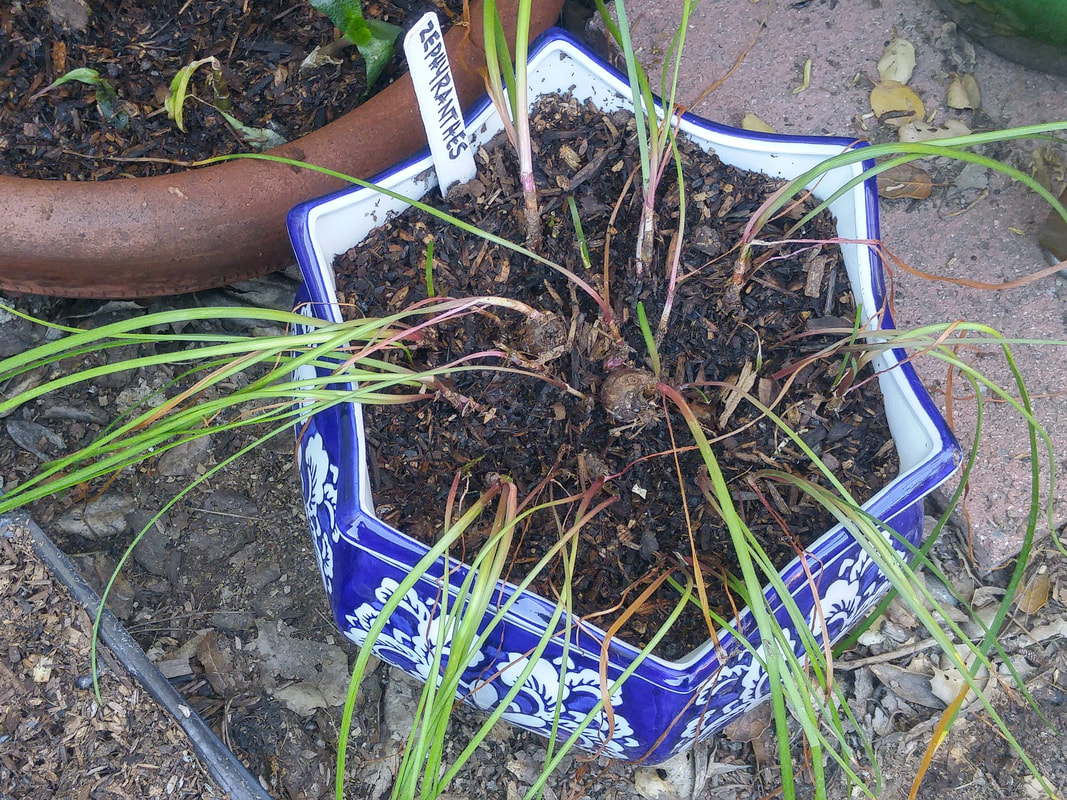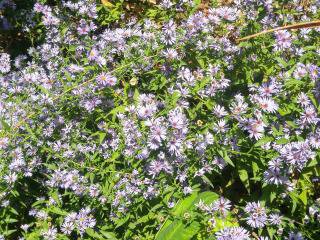| | No, that’s not a non-sequitur. It’s gratitude that we finally have almost consistently mid-70s daytime temperatures and cloudy skies – perfect for starting seeds and transplanting without stressing them with brilliant hot sun afterwards. Turning back our clocks is our cue that we’re really moving into cooler weather and consequently our overwintering edibles and posies. Yay! Plant Everything! While some of these plants may not grow much above ground untill early spring, they'll have well established root systems ready for the great growth spurt with spring's first warmth. Veggies Sow or transplant fava beans, beets, broccoli, Brussels sprouts, cabbage, chard, coriander (cilantro), garlic, kale, kohlrabi, leeks, lettuce (especially romaine types and small-heading Bibb and buttercrunch types, mustards, green and bulb onions, parsley, peas, radishes, shallots and spinaches. Flowies Sow or transplant alyssum, Japanese anemone, baby's breath, bachelor's button (cornflower), bleeding heart, calendula, campanula (canterbury bell, bellflower), candytuft, columbine, coral bell, coreopsis, cyclamen, gazania, English and Shasta daisies, delphinium, dianthus (carnation, pinks, sweet William), forget-me-not, foxglove, gaillardia, hollyhock, larkspur, linaria, lunaria (honesty, money plant, silver dollar plant), lupine, penstemon, phlox, California and Iceland and Shirley poppies, primroses, rudbeckias (coneflower, gloriosa daisy, black-eyed-Susan), snapdragon, stock, sweet peas, violas (Johnny-jump-up, pansy, violet), and regionally adapted wildflowers’. California Natives Scatter regionally adapted wildflowers where you can let their seedpods mature and scatter for future volunteers. Besides California poppies, include baby blue eyes, chia, clarkia, gillia and phacelia. Plant California native plants like ceanothus, grevillea, mimulus and sage, but disturb the rootball as little as possible. Fill the planting hole with water and let it drain away before filling it with the soil dug from the hole. Then fill the water basin again once the plant is in place to thoroughly settle in the rootball with the surrounding soil. Divide cool season native grasses like carex, calamagrostis, festuca, juncus, leymus, melica, muhlenbergia and stipa. Also divide clumping perennials like heuchera, native iris and potentilla. Water well until new growth appears. Shear back Cleveland sage, coyote mint and galvezia by about one-third, and matilija poppy to the ground. Still Have Some Lawn? Fertilize lawns with slow-release nitrogen for gradual, consistent feeding all winter long with the help of rains or irrigation. Continue to mow the lawn as long as it actively grows to encourage branching of individual grass plants for a thicker, healthier lawn that chokes out weeds. Rake leaves off the lawn to allow air, light, and fertilizer to reach the soil surface. Coat the underside of your lawn mower with used oil to inhibit rust and help keep grass clippings from sticking, thus enabling easier cleanup. |
|
4 Comments
Angie
12/12/2017 10:37:24 pm
Amazing blog!
Reply
7/19/2022 04:22:42 pm
Mountains used to be just as despised and feared as swamps. However, mountains have undergone aesthetic rehabilitation (partially thanks to contemporary landscape painting), while marshes continue to be despised. Thoreau, Muir, and Leopold, the three titans of American environmental thought, all praised wetlands for their aesthetic qualities.
Reply
For the somewhat misanthropic and contrarian Thoreau and Muir, the beauty of wetlands was primarily a question of their floral appeal and wildness (freedom from human inhabitation and economic exploitation). Evolutionary natural history and ecology better informed Leopold's aesthetic enjoyment of wetlands.
Reply
Leave a Reply. |
Categories |










 RSS Feed
RSS Feed